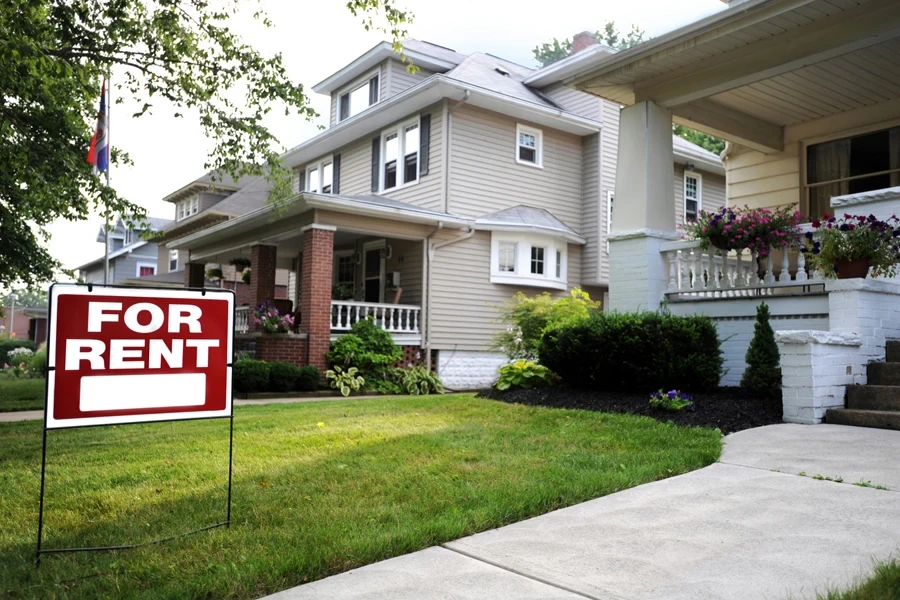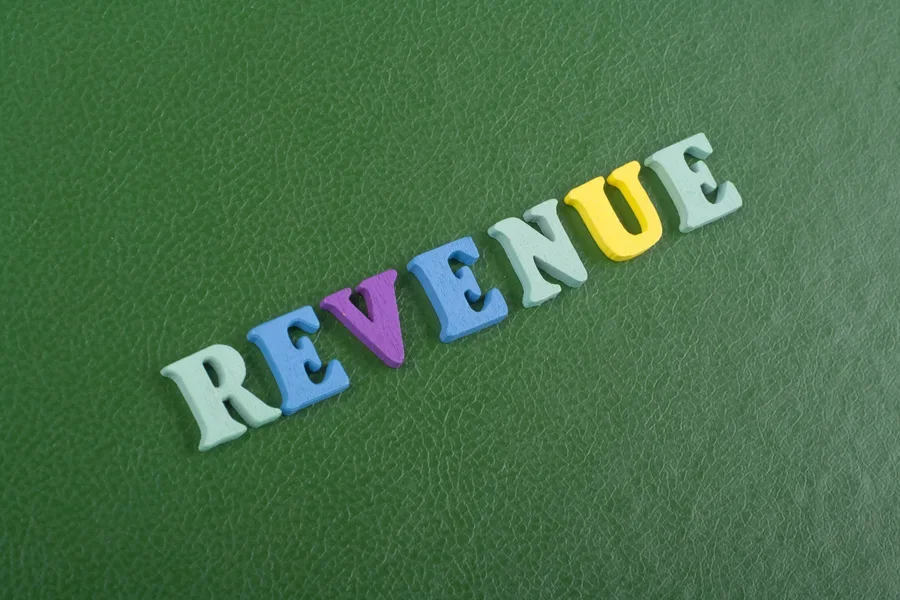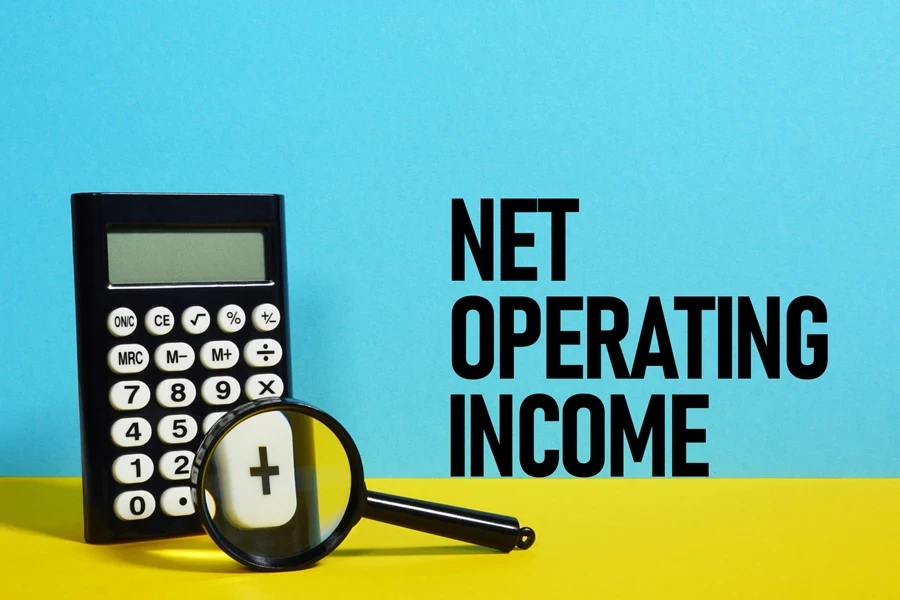Managing a property involves various expenses, including insurance, maintenance, taxes, landscaping, utilities, security, and cleaning. When property owners total these costs and subtract them from revenue, they arrive at a crucial number: net operating income (NOI).
NOI helps business owners determine a property’s value and potential returns. It might seem tricky if you’re new to this concept but don’t worry. This article will explain NOI, how to calculate it, and why it’s important for your business’s growth.
Table of Contents
How to calculate net operating income (NOI)
Net operating income formula
NOI calculation example
What is a good NOI for a rental property?
What is a good NOI margin?
Wrapping up
How to calculate net operating income (NOI)

Net operating income (NOI) is a straightforward way to measure how much income a property generates after covering its operating expenses. NOI is a key metric in real estate because it provides a clear, standardized way to evaluate a property’s profitability and investment potential.
Additionally, net operating income helps investors assess a property’s past profitability and estimate its future earning potential, making it a valuable tool for making informed investment decisions. Because NOI excludes financing costs, capital expenditures, and debt payments, it provides a clear and consistent way to compare different property investments—offering a more “apples-to-apples” profitability analysis.
Net operating income formula
You can calculate net operating income (NOI) by adding a property’s rental income and any additional revenue, then subtracting its direct operating expenses. Here’s the formula:
Net Operating Income (NOI) = (Rental Income + Ancillary Income) – Direct Operating Expenses
This formula is the way to go if you want to know a property’s main operating profits. It removes all non-operating and non-cash expenses to hone in on what the real estate asset generates. More importantly, NOI helps REITs, private equity firms, and other estate companies manage multiple properties. With the formula, the focus is on each property’s performance instead of overall company finances.
NOI calculation example

Let’s say you want to calculate the NOI for your properties in 2021 and 2022 with the following data:
- Rental revenues
- Development management and other revenues
- Rental expenses
- Other expenses
You’ll slot them into the formula, where:
- Rental revenue and development management and other revenues = total income
- Rental and other expenses = direct operating expenses (or total expenses)
Here’s how to calculate it step-by-step:
The step-by-step calculation for 2021
1. Add up your total income:
- Rental revenues: $4, 148 million
- Development management and other revenues: $20 million
Total income = 4, 148 + 20 = 4, 168
2. Add up your total expenses
- Rental expenses: $1, 041 million
- Other expenses: $22 million
Total expenses: 1, 041 + 22 = 1, 062
3. Get NOI by subtracting total expenses from revenue:
4,168 – 1, 063 = 3, 105
NOI for 2021 is $3 105 million.
The step-by-step calculation for 2022
Now, we’ll do the same calculations for 2022:
1. Add up the total income:
- Rental revenues: $4, 913 million
- Development management and other revenues: $21 million
Total income = 4, 913 + 21 = 4, 934
2. Add up the total expenses:
- Rental expenses: $1, 206 million
- Other expenses: $40 million
Total expenses = 1, 206 + 40 = 1, 246
3. Subtract total expenses from revenue:
4, 934 – 1, 246 = 3, 688
NOI for 2022 is $3 688 million.
How much did NOI grow from 2021 to 2022
Since you’re comparing two years, you can calculate the Year-over-Year (YoY) growth rate using this formula:
Growth Rate = (NOI in 2022 / NOI in 2021) – 1
= (3, 688 / 3, 105) – 1
= 1.188 – 1 = 0.188 = 18.8%
So, the final results are that NOi grew by $583 million at an 18.8% growth rate from 2021 to 2022.
What is a good NOI for a rental property?

NOI is a great way to determine whether a rental property is profitable, significantly impacting its value. However, what many consider “good” depends on property type, location, and current real estate market conditions.
When real estate investors want a clearer picture of a rental property’s value, they often compare its NOI to its market value or purchase price. This comparison results in the capitalization rate, or “cap rate,” which is a key metric for assessing how good an investment might be.
Like NOI, the cap rate helps inventors gauge a property’s potential profitability. Here’s the formula they often use:
Cap Rate (%) = Net Operating Income (NOI) / Property Value
By adjusting the formula, investors can easily estimate the property’s value before committing to purchase. Here’s what it looks like:
Estimated Property Value = Net operating Income (NOI) / Cap Rate (%)
For example, if a property has a $100,000 net operating income and an 8% cap rate, its estimated value would look like this:
Estimated Property Value = $200,000 / 8% = 2,500,000
Usually, buyers see properties with a 4% to 12% cap rate as solid investment opportunities. However, location and property type also play a big role in determining if a property is a good deal.
Many assume that a higher cap rate is always better, but that’s not necessarily true for all real estate investors. Higher returns often come with higher risks, so it’s not just about chasing the biggest number. For this reason, the ideal cap rate depends on an investment firm’s strategy, including how much risk they’re willing to take and the level of returns they want.
What is a good NOI margin?

You must convert NOI values into a standardized percentage to make fair comparisons. That’s where the NOI margin comes in. It ensures you compare all properties equally by showing how efficiently each generates income. Here’s how to calculate it:
NOI Margin (%) = (Net Operating Income (NOI) / Property Revenue) x 100
Simply put, the NOI margin tells you how much of every dollar earned in revenue turns into net operating income (NOI). A higher NOI margin means more of the property’s revenue is entering its profit, while a lower margin shows that a larger share is going toward expenses.
Pro tip: Instead of looking at the NOI margin alone, consider comparing it to similar properties based on type, class, and location. This way, you’ll better understand how a property performs relative to the market.
Wrapping up

Net operating income is a key measure of profitability in commercial real estate. It focuses on how much income a property generates without factoring in debt interest, taxes, capital expenses, or depreciation. While there’s no perfect NOI number, investors and lenders pay close attention to things like cap rates, NOI margin, and estimated property value. Now that you know the formulas, read this article to learn more about NOI and how it can be applied to your business to boost success.



